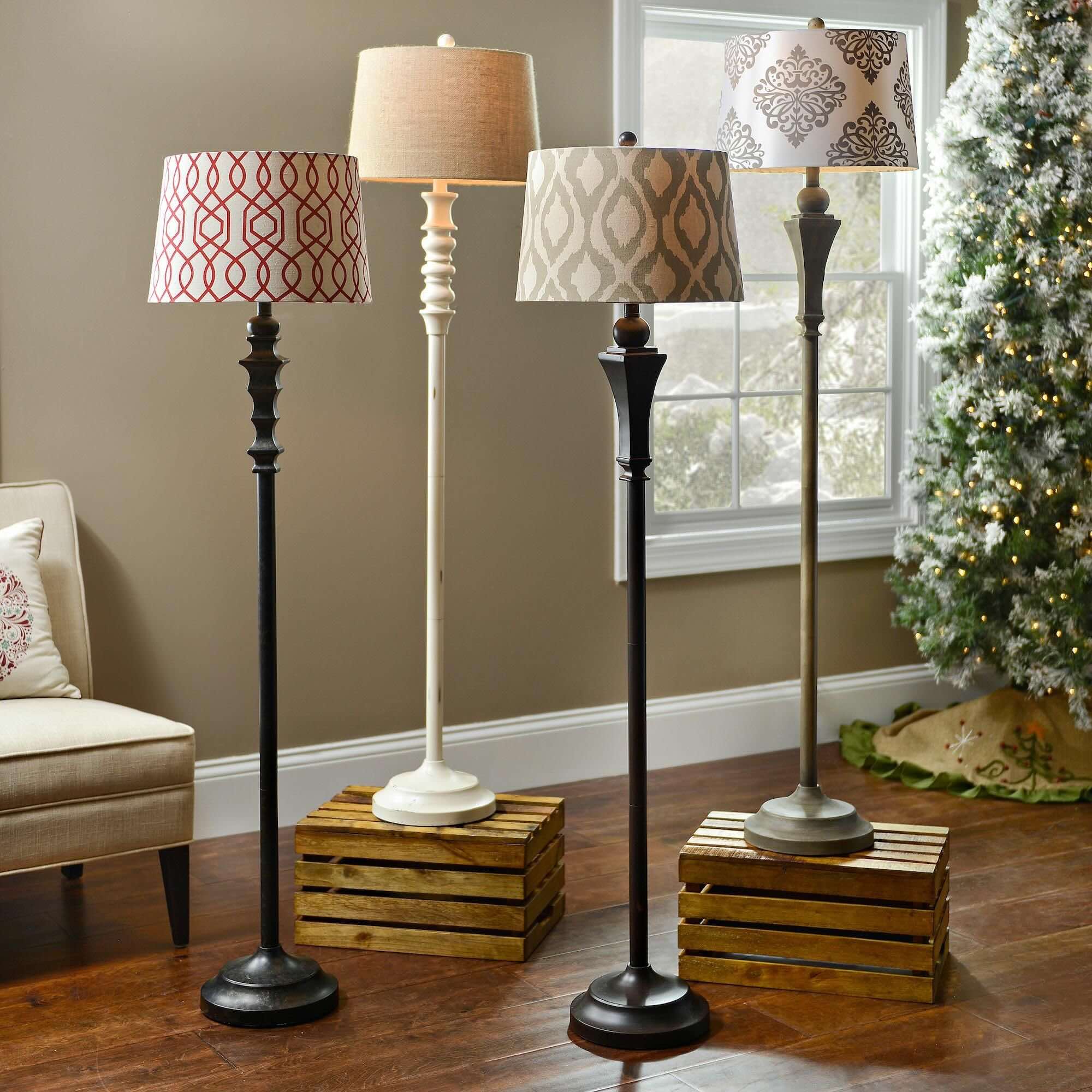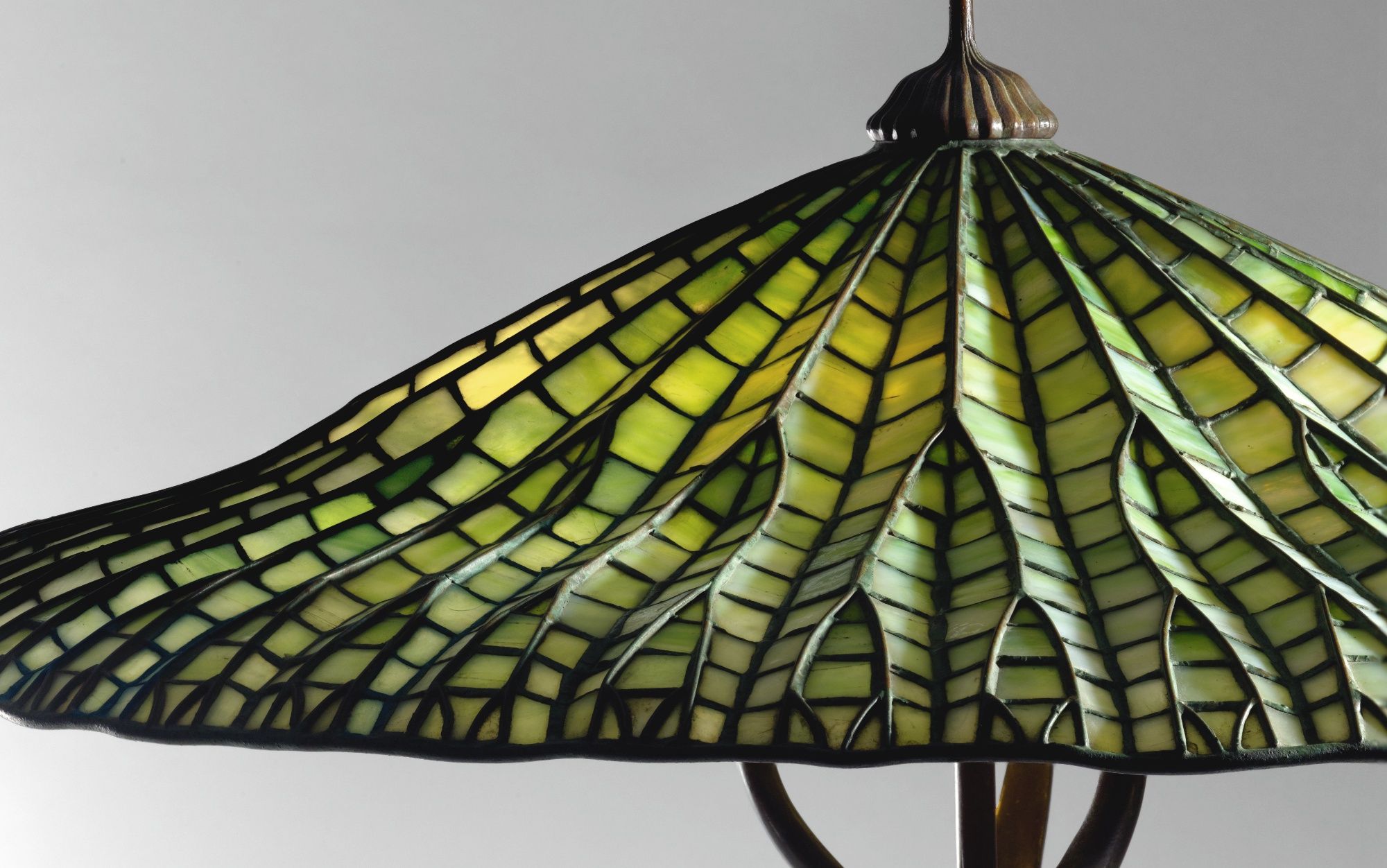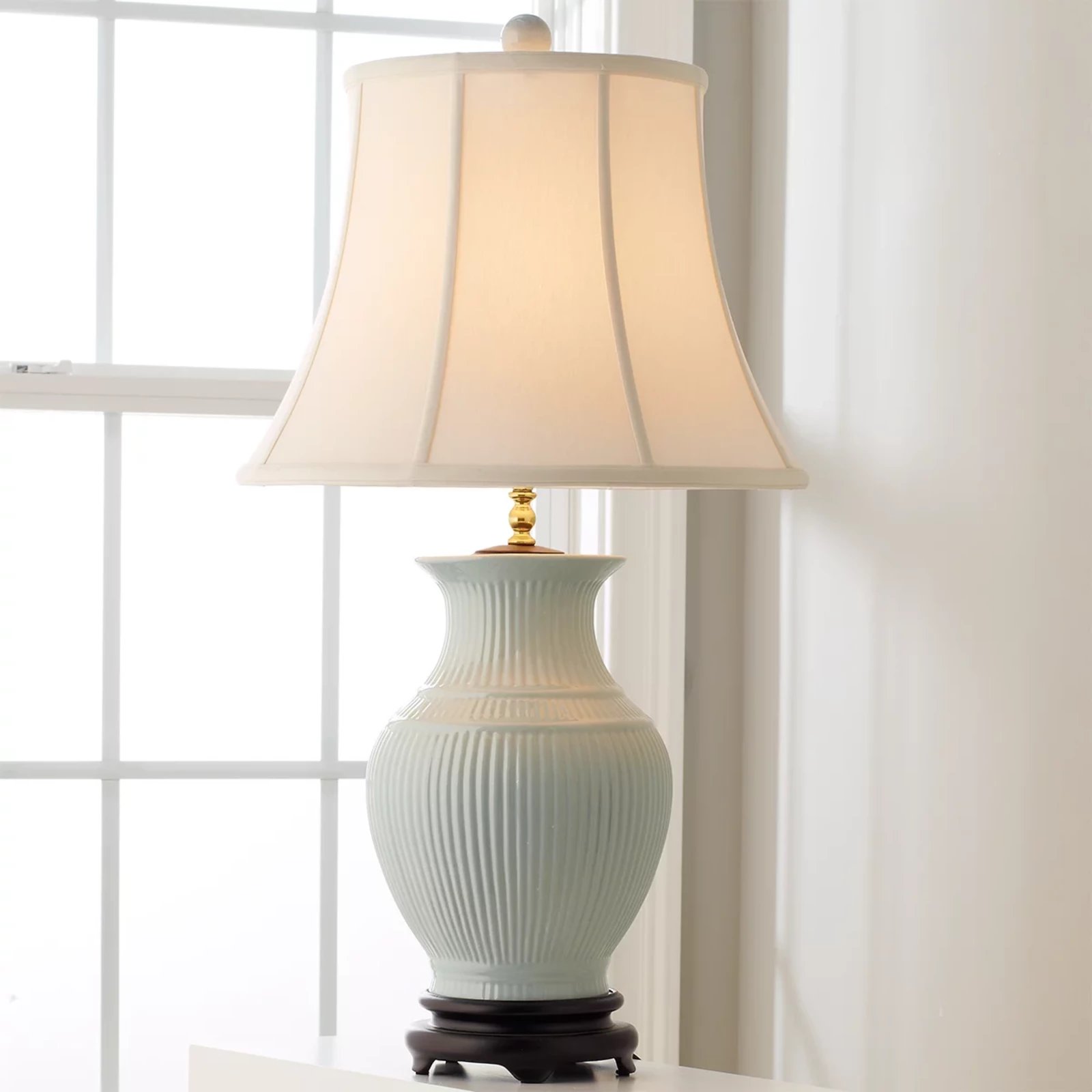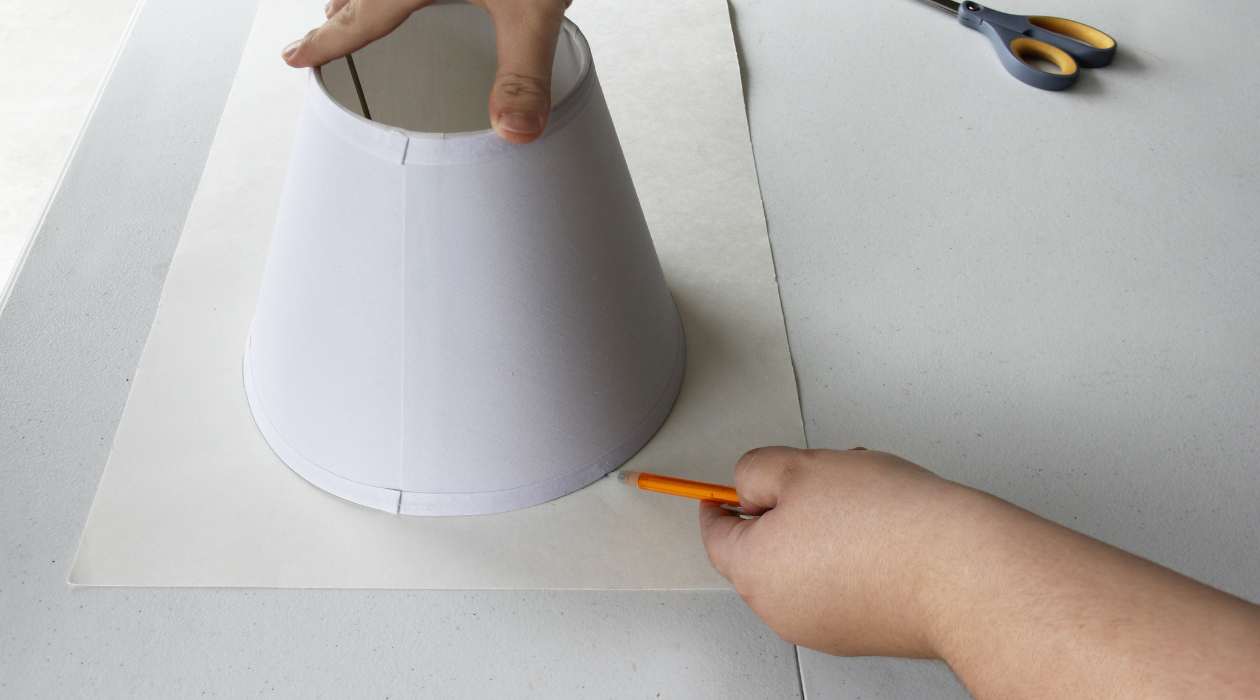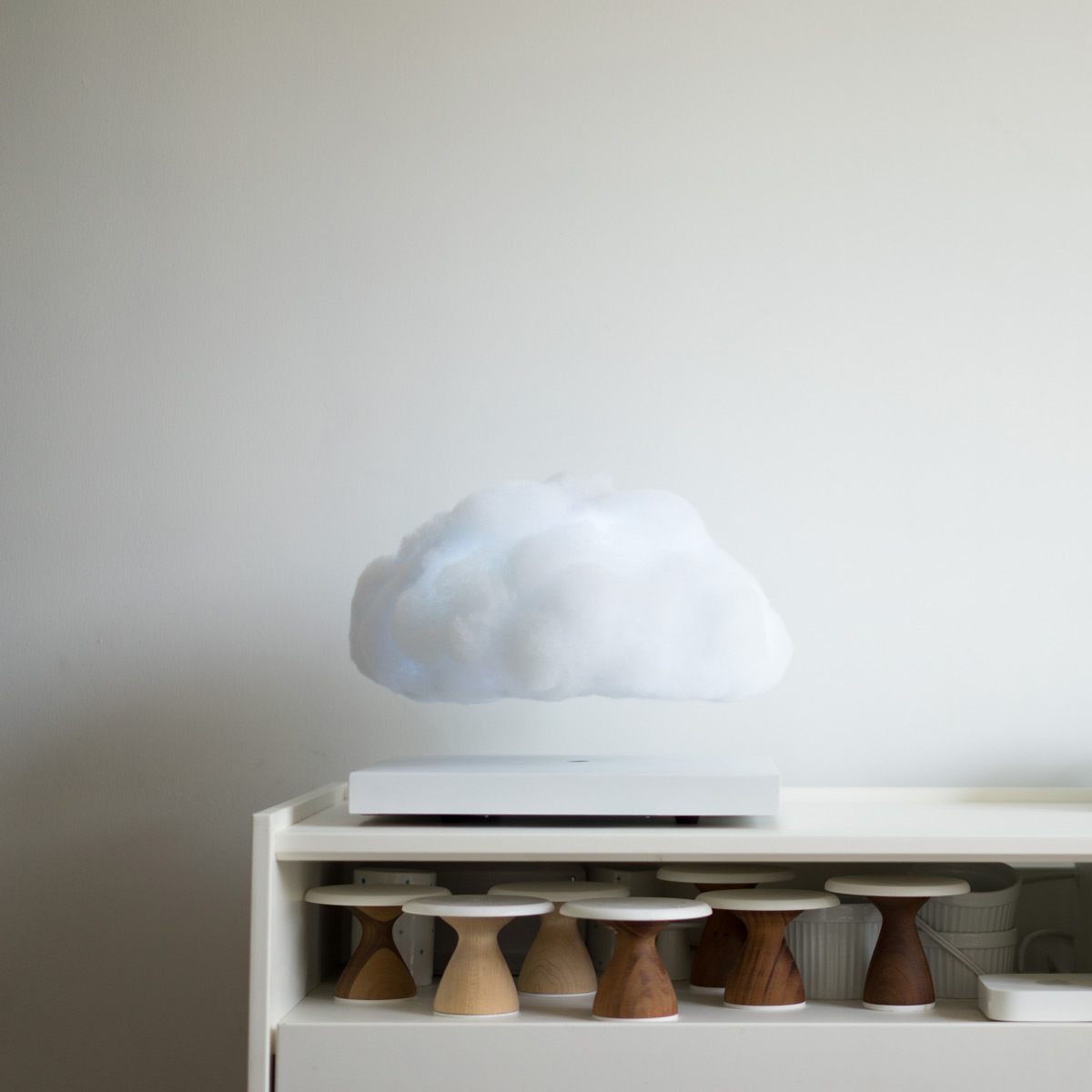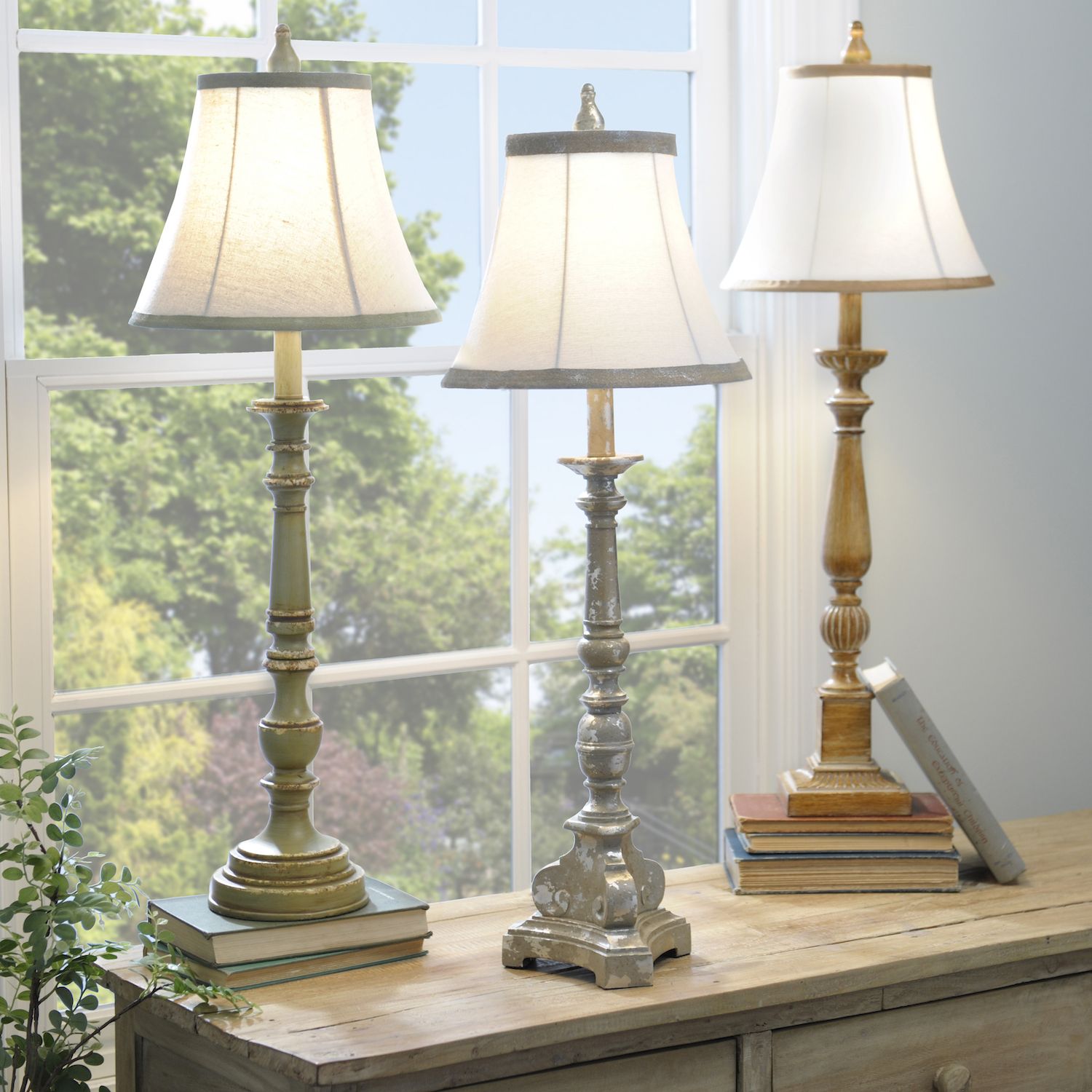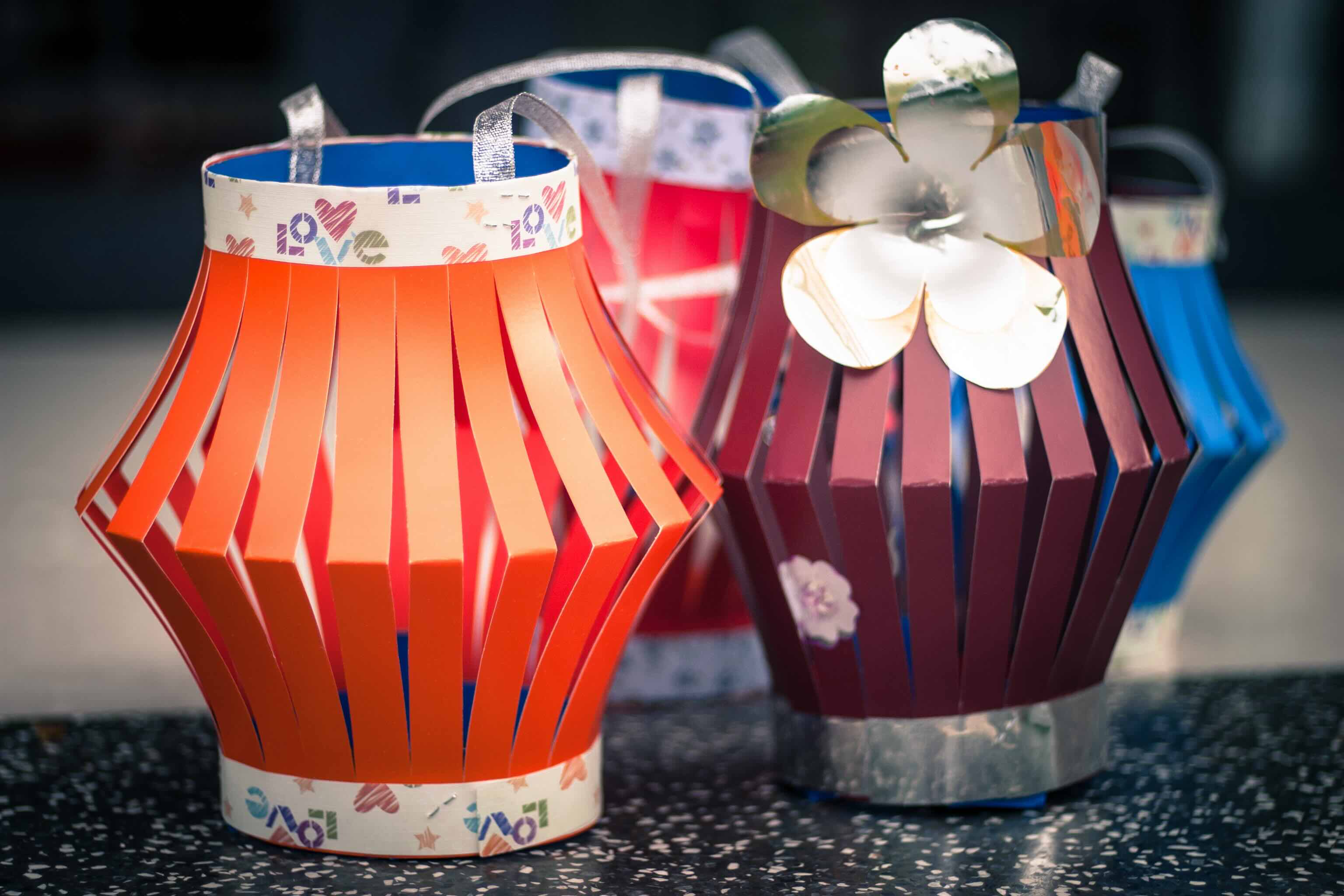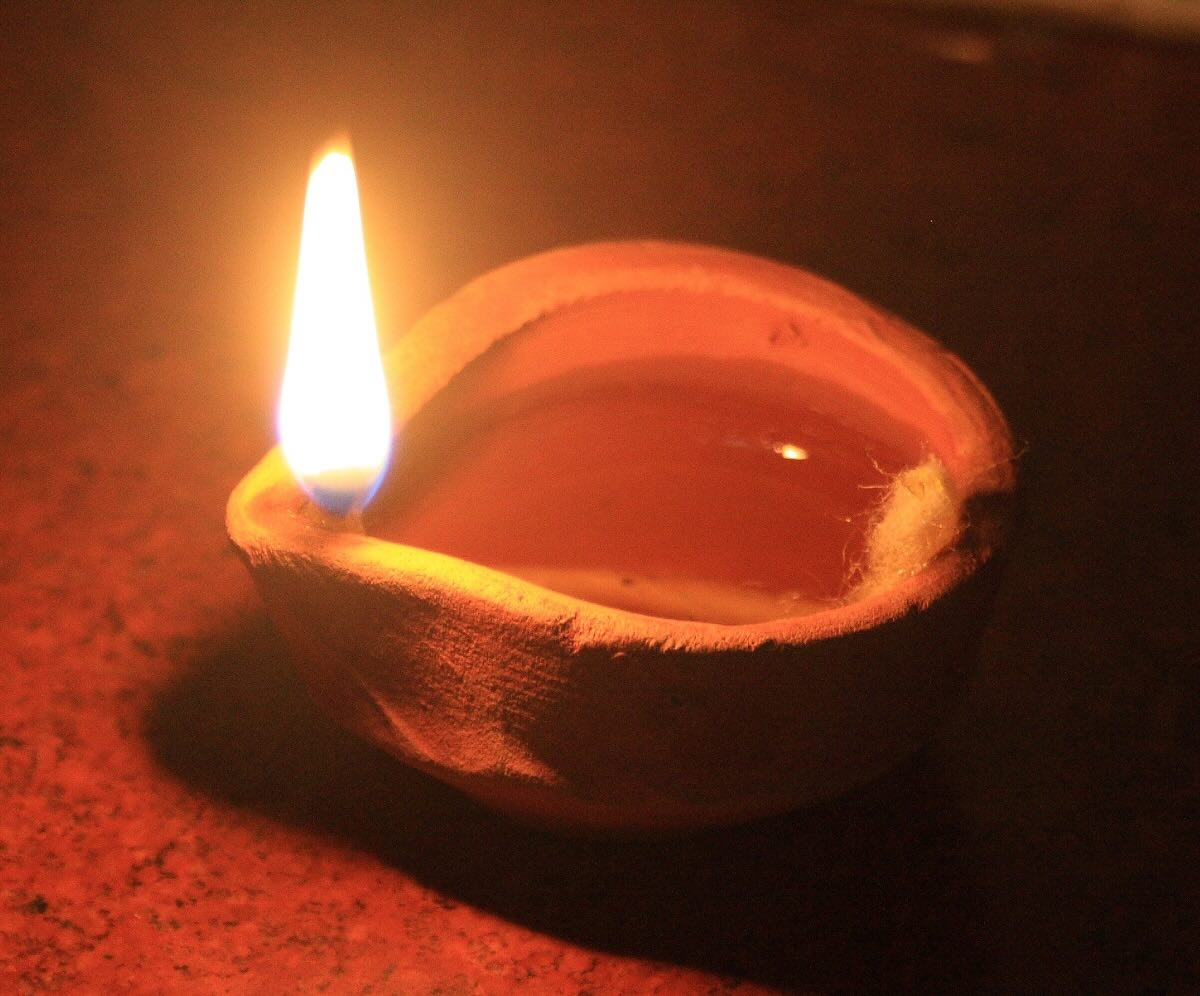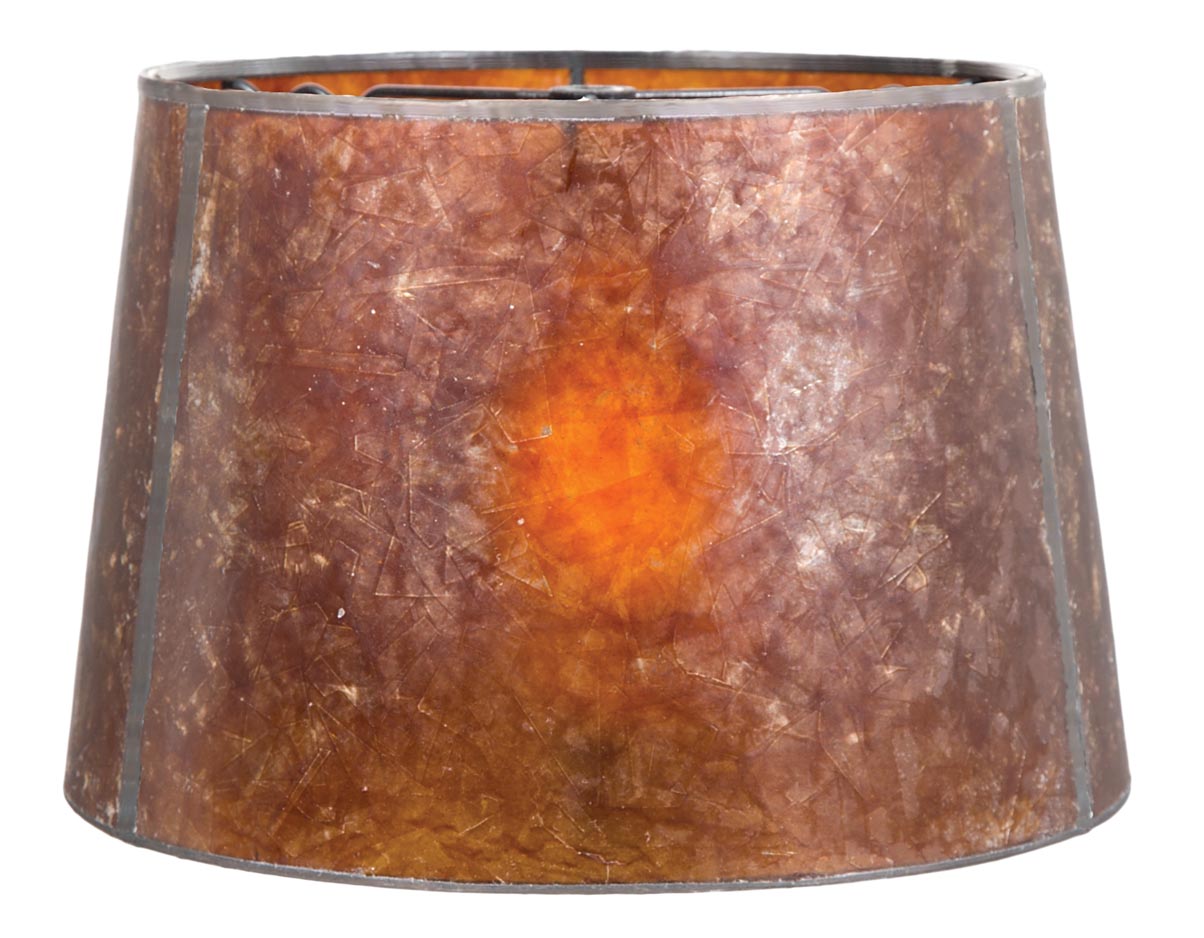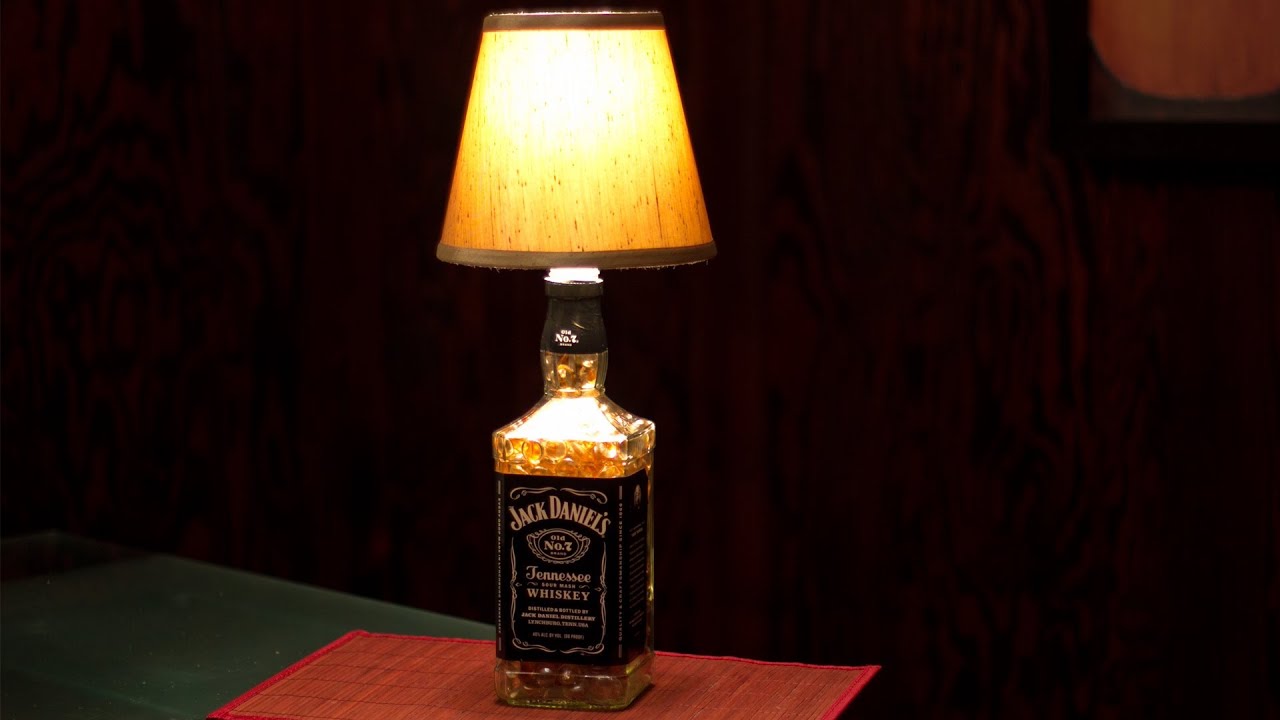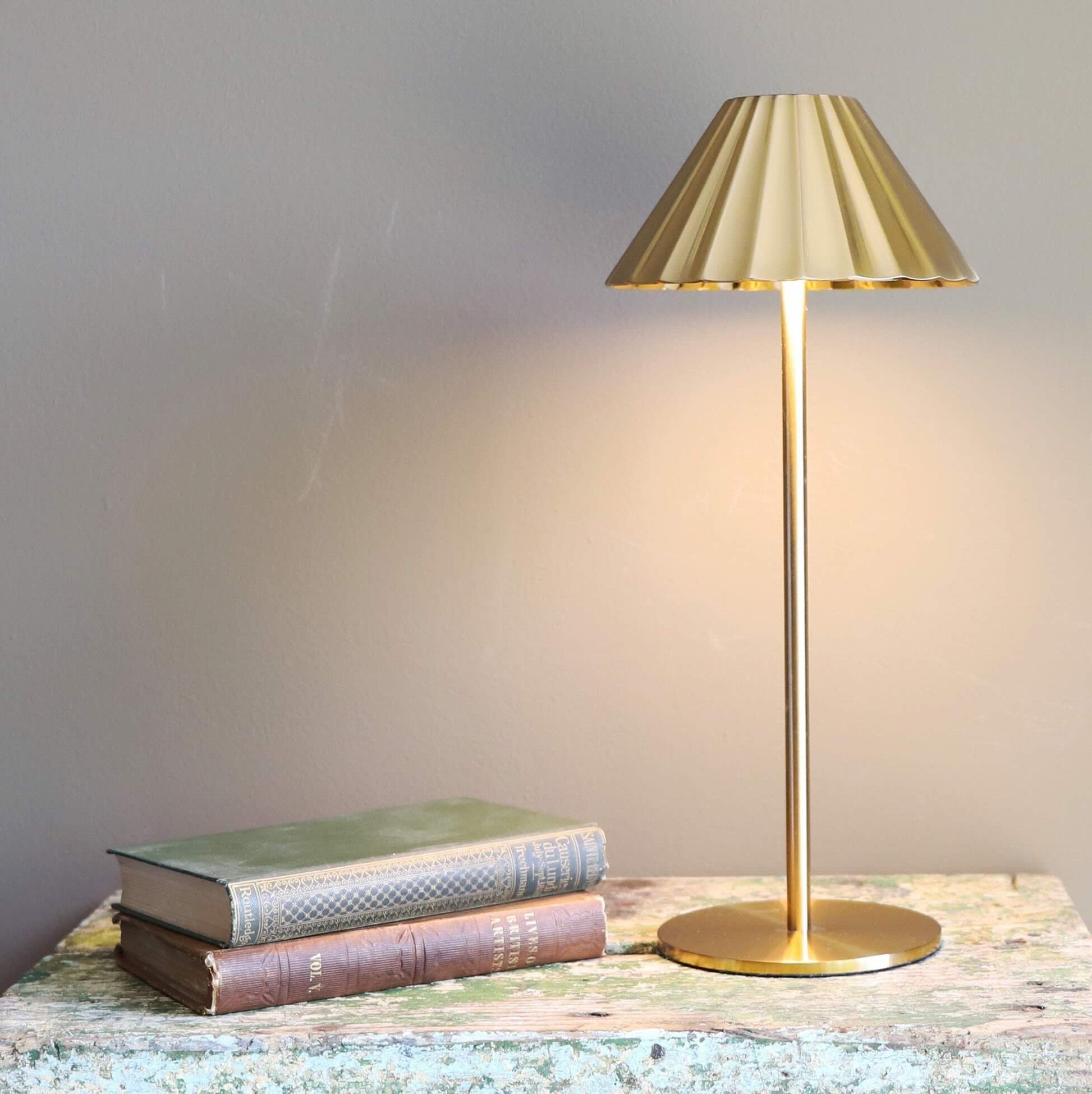

Furniture
How To Make A Cordless Lamp
Modified: February 24, 2024
Learn how to make your lamp cordless with this easy furniture hack. Transform your space and eliminate the need for messy cords.
(Many of the links in this article redirect to a specific reviewed product. Your purchase of these products through affiliate links helps to generate commission for Storables.com, at no extra cost. Learn more)
Introduction
Welcome to our comprehensive guide on how to make a lamp cordless. A cordless lamp is not only a stylish and convenient lighting solution, but it also eliminates the clutter of cords and allows for greater flexibility in lamp placement. Whether you want to repurpose an existing lamp or create a new one from scratch, this step-by-step tutorial will provide you with all the information you need to successfully make a lamp cordless.
Before we dive into the process, it’s important to note that working with electrical components can be dangerous if proper precautions are not taken. Always prioritize your safety and follow these precautions:
- Ensure that the lamp is unplugged and turned off before starting any work.
- Work in a well-ventilated area to reduce the risk of inhaling fumes or particles.
- Wear safety goggles and gloves to protect your eyes and hands from any potential hazards.
- Consult a professional electrician if you are unsure about any aspect of the process.
Now that we’ve covered the safety precautions, let’s move on to the tools and materials you’ll need for this project.
Key Takeaways:
- Say goodbye to tangled cords and hello to flexibility with a DIY cordless lamp. Follow safety precautions, select the right tools, and enjoy the convenience of a clutter-free lighting solution.
- Transform any lamp into a stylish and convenient cordless lighting solution. Prioritize safety, prepare the battery pack, wire the lamp, and enjoy the freedom of a clutter-free living space.
Read more: How To Make A Pipe Lamp
Safety Precautions
Working with electrical components requires caution and attention to ensure your safety. Before you begin making your lamp cordless, it’s important to follow these safety precautions:
- Always unplug the lamp and ensure it is turned off before starting any work. This will help prevent any potential electrical shocks or accidents.
- Work in a well-ventilated area to minimize the risk of inhaling fumes or particles. If you’re working indoors, open windows or use fans to improve air circulation.
- Wear safety goggles and gloves to protect your eyes and hands during the process. This will help prevent any injuries from flying debris or accidental contact with sharp objects.
- Do not work with wet hands or in wet conditions. Water and electricity are a dangerous combination, so make sure your hands are dry before handling any electrical components.
- If you are unsure about any aspect of the process or lack the necessary knowledge and experience, it is always a good idea to consult a professional electrician. They can provide guidance and ensure that the job is done safely and correctly.
Remember, safety should be your top priority throughout the entire process. By following these precautions, you can enjoy a safe and hassle-free experience making your lamp cordless.
Tools and Materials Needed
Before you begin the process of making a lamp cordless, gather the following tools and materials:
Tools:
- Screwdriver set (flathead and Phillips head)
- Wire cutters/strippers
- Soldering iron and solder
- Heat shrink tubing and heat gun
- Electrical tape
Materials:
- Lamp base and socket
- Battery pack (preferably rechargeable)
- Switch (if not included in the battery pack)
- Wire (suitable for electrical connections)
- Wire connectors
- Battery charger (if using rechargeable batteries)
These tools and materials will provide you with everything you need to successfully make your lamp cordless. Make sure you have them ready before you begin the process, as it will help streamline your work and ensure a smooth transition to a cord-free lighting solution.
Read more: How To Make A Mushroom Lamp
Step 1: Selecting the Lamp
The first step in making a lamp cordless is to select the lamp you want to convert. You can repurpose an existing lamp or start from scratch with a new one. Here are a few things to consider when selecting your lamp:
1. Size and Style: Choose a lamp that fits well with your aesthetic preferences and the space where it will be placed. Consider the size, shape, and design elements that will complement your decor. 2. Lamp Base and Socket: Look for a lamp base and socket that are compatible with your cordless conversion. Make sure the base is sturdy enough to support the lamp and that the socket can accommodate the type of bulb you prefer. 3. Accessibility: Consider the accessibility of the lamp base and socket. It should ideally be easy to access for wiring and installation purposes. Avoid lamps with complex or inaccessible designs that may make the process more challenging. 4. Functionality: Determine the intended use of the lamp. Will it be a decorative piece or a functional light source? This will help you assess the power requirements and battery life needed for your cordless lamp. Once you have chosen the lamp, ensure that it is unplugged and turned off before proceeding to the next step. It’s also a good idea to clean the lamp base and socket, removing any dust or debris that may interfere with the wiring and installation process. By carefully selecting the right lamp, you can create a cordless lighting solution that not only enhances the aesthetics of your space but also meets your functional needs.
Step 2: Disconnecting the Cord
Now that you have selected the lamp for your cordless conversion, the next step is to disconnect the power cord. Follow these steps to safely remove the cord:
1. Unplug the Lamp: Ensure that the lamp is disconnected from any power source. Unplug it from the wall outlet or power strip to avoid any risk of electrical shock. 2. Remove the Socket Cover: In most lamps, the socket is covered by a decorative or protective piece. Carefully remove this cover by unscrewing it counterclockwise. Be gentle to avoid damaging any components. 3. Loosen the Socket: Once the cover is removed, you’ll see the socket connected to the lamp base. Use a screwdriver to loosen any screws or nuts that secure the socket in place. This will allow you to detach the socket from the lamp base. 4. Disconnect the Wires: Inside the lamp base, you’ll find the wires that connect the socket to the power cord. Locate the wire connectors or terminal screws that hold the wires together. Loosen these connectors or screws to disconnect the wires from the socket. 5. Remove the Power Cord: With the wires disconnected, gently pull the power cord out of the lamp base. If there are any knots or obstructions, untangle or remove them before completely removing the cord. By following these steps, you can safely disconnect the power cord from the lamp. Remember to handle the lamp and its components with care to avoid any damage. In the next step, we’ll prepare the battery pack for installation.
Step 3: Preparing the Battery Pack
Now that you have disconnected the power cord from the lamp, it’s time to prepare the battery pack that will provide the power for your cordless lamp. Follow these steps to get the battery pack ready for installation:
1. Select a Suitable Battery Pack: Choose a battery pack that is compatible with your lamp’s power requirements. Consider factors such as voltage, capacity, and battery type. Opt for a rechargeable battery pack for long-term convenience and cost-effectiveness. 2. Check the Battery Pack’s Charging Requirements: If you are using a rechargeable battery pack, make sure to familiarize yourself with the manufacturer’s instructions for charging. Some battery packs require a specific charger or charging method, so ensure you have the necessary equipment. 3. Prepare the Battery Pack: If the battery pack comes with any protective covers or labels, remove them. Examine the battery pack to ensure it is in good condition, with no signs of damage or corrosion. 4. Inspect and Connect the Wires: Check the wires on the battery pack, ensuring they are intact and in good condition. If necessary, trim the wires to an appropriate length, leaving enough length to reach the lamp’s socket. Strip off a small section of insulation from the end of each wire, exposing the bare copper. 5. Solder the Wires: Use a soldering iron to solder the stripped ends of the wires to the corresponding terminals on the battery pack. Make sure to match the positive (+) and negative (-) terminals correctly. Apply a small amount of solder to join the wire and terminal securely. Use heat shrink tubing to insulate the soldered connections, and apply heat using a heat gun to shrink the tubing. 6. Test the Battery Pack: Before proceeding to the installation, double-check that the battery pack is functioning properly. Use a multimeter to measure the voltage output and ensure it matches the required specifications for your lamp. By properly preparing the battery pack, you can ensure a stable and reliable power source for your cordless lamp. In the next step, we will install the battery pack into the lamp base.
Step 4: Installing the Battery Pack
With the battery pack prepared, it’s time to install it into the lamp base. Follow these steps to securely install the battery pack:
1. Assess the Lamp Base: Examine the lamp base and identify a suitable location to house the battery pack. Look for an area that provides enough space to accommodate the battery pack while ensuring it remains secure and stable. 2. Create a Battery Compartment: If your lamp base does not have a designated compartment, you may need to create one. Carefully measure the dimensions of the battery pack and mark the area where the compartment will be located. 3. Prepare the Lamp Base: Using a screwdriver and other suitable tools, create a cavity or hollow space within the marked area of the lamp base. Ensure the size and shape of the compartment are sufficient to hold the battery pack securely. 4. Secure the Battery Pack: Place the prepared battery pack into the designated compartment within the lamp base. Make sure it fits snugly and does not move around. Use foam padding or adhesive materials to secure the battery pack if necessary. Ensure that the battery pack is easily accessible for future charging or maintenance. 5. Route the Wires: Carefully route the wires from the battery pack to the lamp socket. Keep the wires away from any moving parts or areas of potential heat. Use wire clips or adhesive tape to secure the wires along the lamp base for a neater appearance. 6. Connect the Wires to the Lamp Socket: Strip the insulation from the ends of the wires coming from the battery pack. Connect the positive wire to the terminal marked with a “+” symbol on the lamp socket, and connect the negative wire to the terminal marked with a “-” symbol. Secure the wires in place using wire connectors or by tightening terminal screws. 7. Double-Check the Connections: Before proceeding, double-check that all connections are secure and properly insulated. Ensure that there are no exposed wires that could potentially cause a short circuit. By carefully installing the battery pack into the lamp base, you can ensure a safe and stable power source for your cordless lamp. In the next step, we’ll wire the lamp to complete the conversion process.
To make a lamp cordless, you can use a battery-operated LED light bulb or a rechargeable battery pack. Simply replace the corded bulb with the battery-powered option for a cord-free lighting solution.
Read more: How To Make A Hanging Lamp
Step 5: Wiring the Lamp
Now that the battery pack is securely installed, it’s time to wire the lamp and establish the necessary connections. Follow these steps to wire your cordless lamp:
1. Prepare the Lamp Socket: If the lamp socket does not already have wires attached, you will need to attach them. Strip the insulation from the ends of two wire pieces, exposing enough bare copper to make a secure connection. 2. Connect the Lamp Socket Wires: Connect one end of each wire to the terminals on the lamp socket. It’s important to ensure that the positive (+) wire is connected to the terminal designated for the center contact of the socket, and the negative (-) wire is connected to the outer contact terminal. 3. Connect the Battery Pack Wires: Strip the insulation from the ends of the wires coming from the battery pack. Connect the positive wire from the battery pack to the positive wire of the lamp socket, and connect the negative wire from the battery pack to the negative wire of the lamp socket. Use wire connectors or terminal screws to secure the connections. 4. Insulate the Connections: Once all the connections are made, insulate each wire connection with electrical tape or heat shrink tubing. This will prevent any exposed wires and reduce the risk of electrical shock. 5. Secure Loose Wires: Use zip ties or adhesive tape to secure any loose wires and prevent them from moving or getting tangled. Keeping the wiring organized will ensure a neat and professional-looking finished product. 6. Double-Check the Connections: Before proceeding, double-check all the connections to ensure they are secure and properly insulated. Test the connections by gently tugging on the wires to ensure they are firmly attached. By carefully wiring the lamp, you’ll establish the necessary connections for the cordless operation. The next step involves testing the lamp to ensure everything is functioning correctly.
Step 6: Testing the Lamp
After wiring the lamp, it’s crucial to test its functionality before proceeding with the final steps. Follow these steps to test your cordless lamp:
1. Charge the Battery Pack: If you’re using a rechargeable battery pack, ensure it is fully charged before testing the lamp. Follow the manufacturer’s instructions on how to properly charge the battery pack. 2. Switch on the Lamp: If your battery pack includes a built-in switch, ensure it is in the “on” position. If not, skip this step and proceed to the next one. 3. Plug in the Lamp: If you have a battery pack with a built-in switch, plug the lamp into a power source and turn it on. If the lamp lights up, it indicates that the wiring and connections are successful. If the lamp doesn’t light up, double-check the connections and ensure the battery pack is fully charged. 4. Unplug the Lamp: After verifying that the lamp functions with the battery pack, unplug it from the power source. This step ensures that the lamp is now operating solely on the battery power. 5. Test the Lamp: Turn the lamp on again to see if it lights up. If it does, congrats! Your cordless lamp is working. If it doesn’t, double-check the connections, ensure the battery pack is charged, and troubleshoot any issues that may be preventing it from functioning properly. 6. Check Battery Life: Leave the lamp on for an extended period to test the battery life. Monitor how long the lamp remains lit before the battery power diminishes. This will give you an idea of the lamp’s battery life and whether it meets your needs. By testing the lamp, you can ensure that it is functioning as intended and powered by the battery pack. If any issues arise during testing, troubleshoot and make the necessary adjustments before proceeding to the next step.
Step 7: Securing Loose Wires
After testing the functionality of your cordless lamp, it’s important to secure any loose wires to ensure a tidy and safe final product. Follow these steps to secure the loose wires:
1. Identify Loose Wires: Inspect the lamp base and socket to identify any loose or dangling wires that may need to be secured. Pay close attention to the area where the wires connect to the lamp socket or battery pack. 2. Trim Excess Wire Length: If the wires are excessively long, trim them to a suitable length. Leave enough slack to allow movement during assembly or maintenance, but avoid having excessively loose or tangled wires that could pose a risk. 3. Bundle the Wires: Gather the wires together neatly and use zip ties, twist ties, or electrical tape to bundle them together. This will prevent them from hanging loose or getting tangled inside the lamp base. 4. Secure the Wires: Use adhesive tape or zip ties to secure the bundled wires along the lamp base or socket. This will ensure that the wires are held in place and do not interfere with the function or aesthetics of the lamp. 5. Keep Wires Away from Moving Parts: Make sure the secured wires are positioned away from any moving parts of the lamp or areas that may generate heat. This will prevent the wires from tangling or getting damaged during operation. 6. Test the Lamp Again: After securing the loose wires, test the lamp once more to ensure that the wires are properly connected and that the lamp functions as desired. Check for any signs of loose connections or wires coming undone during testing. By securing the loose wires, you’ll not only improve the aesthetics of your cordless lamp but also minimize the risk of damage or accidents caused by tangled or exposed wires. This step is essential for creating a professional-looking and safe final product.
Step 8: Reassembling the Lamp
Now that the wiring and loose wires have been taken care of, it’s time to reassemble your lamp and put the finishing touches on your cordless lighting project. Follow these steps to reassemble the lamp:
1. Attach the Lamp Socket: If you removed the lamp socket during the earlier steps, reattach it to the lamp base. Screw it back into place using a screwdriver, making sure it is securely fastened. 2. Replace the Socket Cover: If your lamp had a decorative or protective cover for the socket, reattach it by screwing it back into place. Ensure it is aligned properly and snugly fit. 3. Check the Lamp Shade: Inspect the lamp shade for any dirt or dust that may have accumulated during the process. Clean the shade if necessary and ensure it is free from any obstructions that could affect the lighting. 4. Attach the Lamp Shade: Carefully place the lamp shade back onto the lamp base, following the instructions or method specific to your lamp model. Ensure that the shade is balanced and securely attached. 5. Final Adjustments: Make any final adjustments to the lamp’s position or orientation to ensure it is visually pleasing and properly illuminates the desired area. Test the lamp’s on/off switch or use the switch on the battery pack to turn it on and off. 6. Enjoy Your Cordless Lamp: Congratulations! You have successfully converted your lamp into a cordless lighting solution. Enjoy the convenience and flexibility of a cord-free lamp in your living space or any other area of your choice. Remember to periodically check the battery pack’s charge level and recharge it as needed. Additionally, keep an eye out for any signs of wear and tear or loose connections and address them promptly to maintain the lamp’s functionality. By carefully reassembling the lamp, you’ll complete the process of making your lamp cordless and be able to enjoy the benefits of a clutter-free lighting solution in your home or office.
Read more: How To Make A Wood Lamp
Conclusion
Congratulations on successfully making your lamp cordless! By following the steps outlined in this comprehensive guide, you have transformed a traditional lamp into a convenient and stylish cord-free lighting solution. Not only does a cordless lamp eliminate the hassle of dealing with tangled cords, but it also offers the flexibility to place the lamp anywhere you desire.
Throughout this process, it was crucial to prioritize safety by following the recommended precautions and consulting professionals when necessary. Working with electrical components requires caution and attention to ensure a safe and successful project. From selecting the lamp and disconnecting the cord to preparing the battery pack, wiring the lamp, and securing loose wires, each step played a vital role in the conversion process. Testing the lamp’s functionality and ensuring that all connections were secure were also crucial to a successful outcome. By completing the final step of reassembling the lamp, you have brought your cordless creation to life. Now, you can enjoy the benefits of a clutter-free lamp that adds convenience and style to your living space. Remember to periodically check the battery pack’s charge level and address any maintenance or repair needs that may arise. Regular care will ensure the longevity and optimal performance of your cordless lamp. We hope this guide has provided you with the necessary knowledge and confidence to undertake your cordless lamp project. Enjoy the freedom and enhanced aesthetics that come with a cordless lighting solution, and let your creativity shine through in your home or workspace. Happy DIY-ing!
Frequently Asked Questions about How To Make A Cordless Lamp
Was this page helpful?
At Storables.com, we guarantee accurate and reliable information. Our content, validated by Expert Board Contributors, is crafted following stringent Editorial Policies. We're committed to providing you with well-researched, expert-backed insights for all your informational needs.
